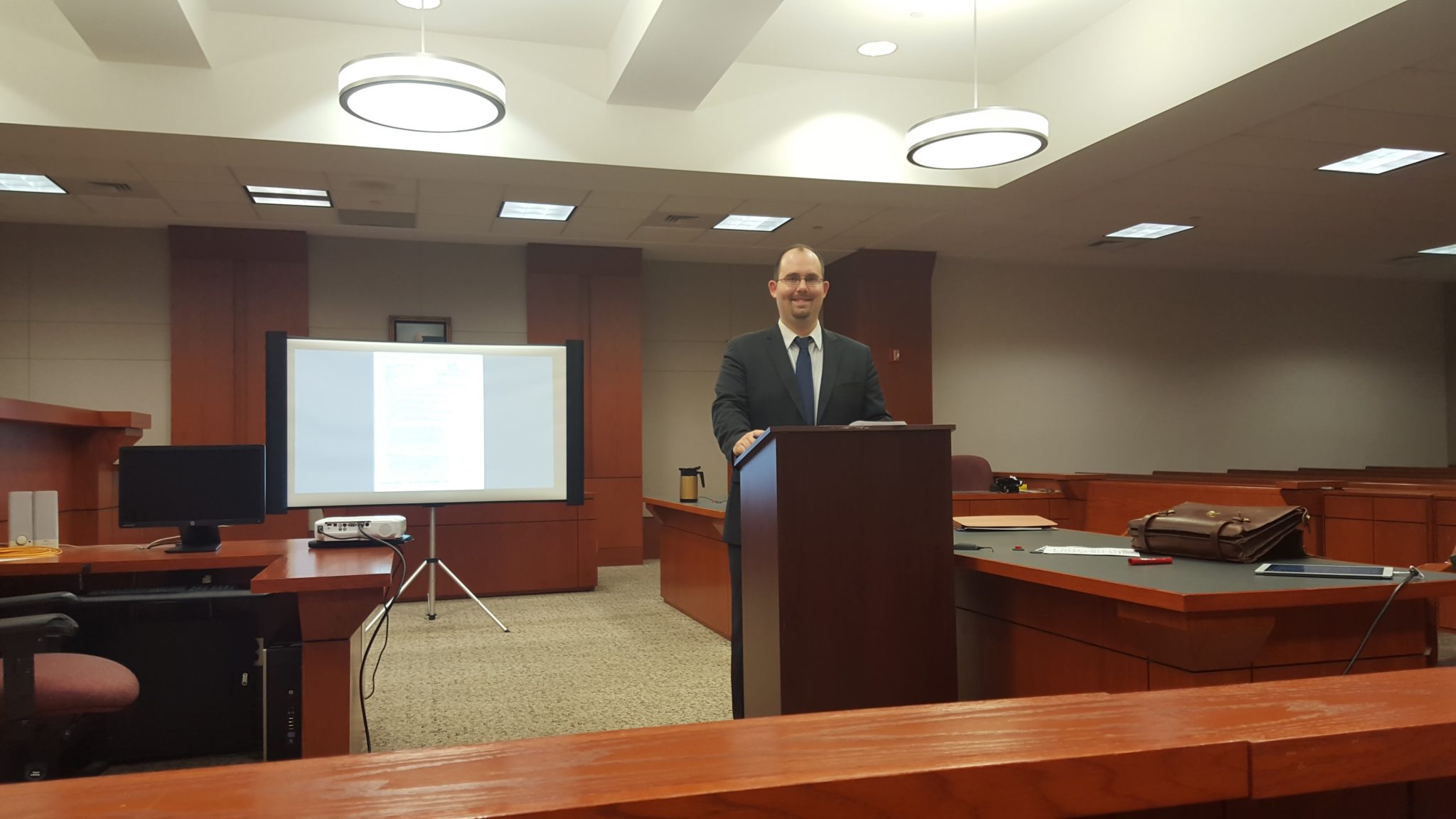Grasping the Art of Trial Presentations: Key Techniques for Efficient Lawful Arguments
Grasping the Art of Trial Presentations: Key Techniques for Efficient Lawful Arguments
Blog Article
Browsing the Complexities of Test Presentations: Tips for Seamless Shipment and Compelling Debates
In the world of lawful proceedings, the art of trial presentation stands as a vital component of success. The intricacies integral in trial presentations require a delicate balance of strategy, finesse, and skill.

Recognizing Trial Purposes
To effectively navigate a trial, it is vital to have a clear understanding of the purposes that need to be achieved. Before entering the court room, lawful groups must define their goals and preferred results. These goals function as leading concepts throughout the test, shaping strategies and influencing decision-making processes.
Understanding trial goals includes an extensive analysis of the situation, legal precedents, and the client's benefits. Trial Presentations. It needs a precise assessment of the truths, determining crucial problems, and expecting prospective challenges. By setting quantifiable and details objectives, lawyers can tailor their arguments and presentations to line up with the preferred results
Moreover, a clear grasp of test goals allows legal groups to focus on proof, witnesses, and lawful disagreements efficiently. It enables for the growth of a systematic narrative that resonates with the court and jury, strengthening the total instance presentation.

Organizing Evidence Properly
Having a clear understanding of test goals lays the foundation for organizing proof successfully in legal proceedings - Trial Presentations. By aligning the discussion of evidence with the desired end results of the test, legal groups can reinforce their disagreements and enhance their persuasiveness. One crucial facet of organizing evidence is classification. Grouping proof based upon themes or importance to certain legal components can assist improve the discussion and make complicated information extra digestible for the court or court.
Another trick element in arranging evidence successfully is developing a rational circulation. Presenting proof in a coherent and consecutive fashion can help develop an engaging narrative that sustains the lawful arguments being made. Furthermore, using visual help such as graphs, timelines, or charts can even more improve the company of evidence and help in clearing up intricate relationships or sequences of occasions.
Furthermore, guaranteeing that all proof offered is relevant and permissible to the instance is essential. Inadmissible or irrelevant evidence can diminish the stamina of the argument and potentially harm the reputation of the here and now event. A thorough evaluation and option process must other be taken on to consist of only the most impactful and legally audio proof in the trial presentation.
Crafting Influential Stories
Crafting compelling stories plays a critical duty in providing persuasive debates during lawful proceedings. When creating a narrative for a test presentation, it is crucial to establish a clear story that highlights essential factors and links them in a systematic way. By weaving with each other evidence, testament, and legal debates into a convincing and natural narrative, lawful professionals can successfully support for their clients and raise the likelihood of a positive outcome in the court.
Understanding Visual Aids
Efficient use of visual aids is crucial to improving the influence and clearness of trial discussions. Aesthetic help, when used strategically, have the power to simplify complicated details, reinforce essential factors, and leave a long lasting perception on the discretionary. To master visual aids in test discussions, it is crucial to guarantee that they are clear, succinct, and pertinent to the debates being made.
When great post to read incorporating visual aids, such as graphes, photos, timelines, or graphs, into a test discussion, it is important to keep them visually appealing yet expert. The visuals must match the verbal arguments, supplying an aesthetic depiction of the info being gone over without frustrating the target market with unnecessary details.
Furthermore, exercising with the visual aids beforehand is vital to make sure a seamless delivery during the test. Acquainting oneself with the web content, shifts, and timings of each visual aid can help keep the circulation of the presentation and avoid technical problems that might develop.
Providing Impactful Closing Arguments
An engaging closing disagreement offers as the conclusion of a test presentation, enveloping the core narrative and convincing the court and jury in the direction of a favorable choice. Begin by outlining the read review primary debates that support your customer's position, highlighting why the proof presented throughout the trial sustains your narrative.
Additionally, including sob story can further enhance your closing debate. By humanizing the case and linking on a personal degree with the decision-makers, you can stimulate compassion and understanding, influencing their understanding of the realities offered. Additionally, repeating the lawful criteria that must be satisfied for a positive judgment can enhance the validity of your setting. Eventually, a well-crafted closing debate need to leave a lasting perception, compelling the discretionary to regulation in your customer's support.
Verdict
In verdict, understanding test discussions entails recognizing purposes, arranging proof, crafting narratives, using visual aids, and delivering impactful closing arguments. By implementing these strategies effectively, legal representatives can offer their instance effortlessly and make engaging disagreements in the courtroom. It is essential to navigate the intricacies of test presentations with precision and skill to attain success in lawful procedures.
By aligning the discussion of proof with the preferred outcomes of the test, lawful teams can strengthen their debates and improve their persuasiveness (Trial Presentations). To grasp visual help in trial discussions, it is critical to make sure that they are clear, concise, and relevant to the debates being made
An engaging closing argument offers as the conclusion of a trial discussion, encapsulating the core story and convincing the judge and court towards a desirable choice. Begin by describing the major disagreements that support your customer's position, stressing why the evidence offered throughout the trial sustains your narrative.In verdict, grasping test presentations involves comprehending objectives, arranging proof, crafting stories, using aesthetic aids, and providing impactful closing arguments.
Report this page